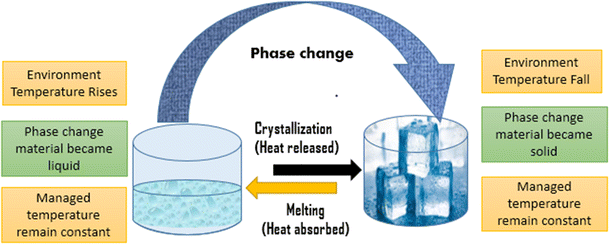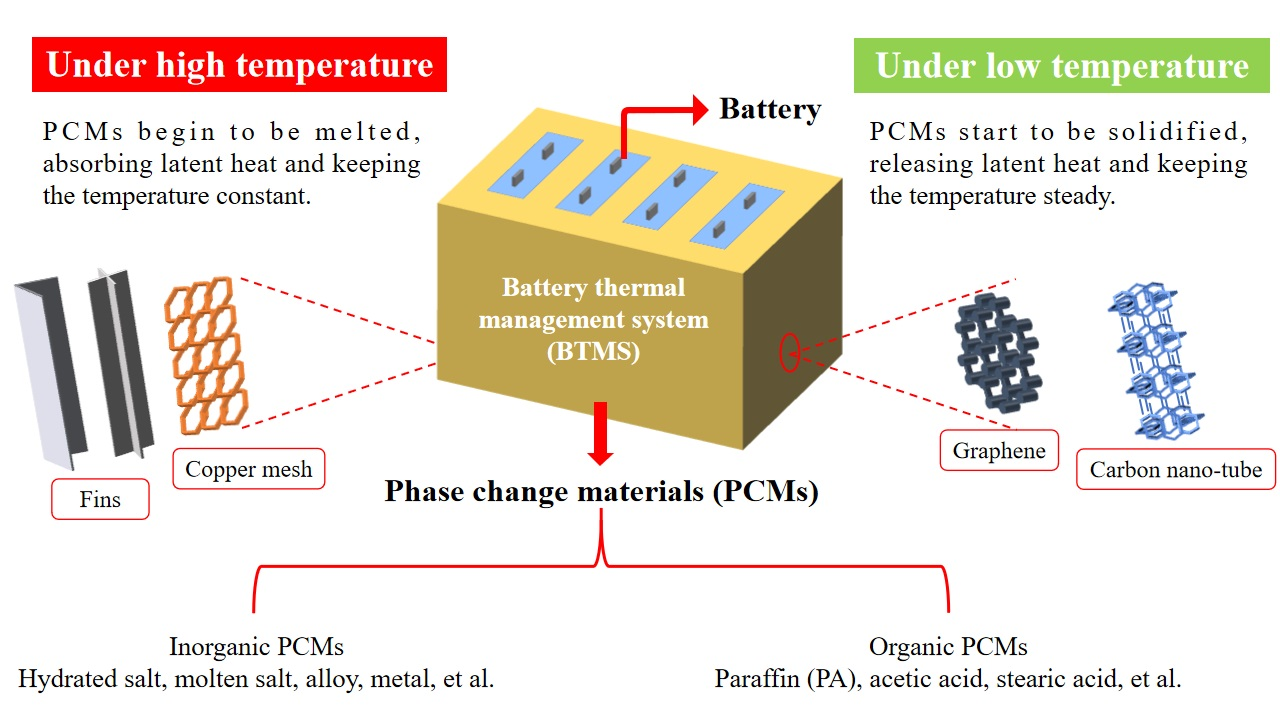


Phase-change materials (PCMs) are a revolutionary class of substances that can absorb and release large amounts of thermal energy during their phase transition between solid and liquid states. This unique property makes PCMs an attractive solution for thermal management in various applications, including the automotive industry. By leveraging the power of PCMs as coolants, car manufacturers can achieve efficient temperature regulation, improve energy efficiency, and enhance overall vehicle performance.
In this comprehensive guide, we will explore the principles of PCMs, their advantages as coolants, and their applications in automotive cooling systems. We will delve into the challenges associated with PCM implementation and discuss mitigation strategies. Additionally, we will examine the different types of PCMs, their thermal properties, and system design considerations. Finally, we will explore future prospects and emerging trends in the field of PCM-based cooling solutions for cars.

PCMs are substances that undergo a phase transition, typically between solid and liquid states, at a specific temperature range. During this process, they absorb or release a significant amount of latent heat, enabling them to store and release thermal energy effectively. This latent heat storage capacity is the key principle behind their use as coolants, allowing PCMs to regulate temperatures within a desired range.
The phase transition process in PCMs is governed by their melting and freezing points. As a PCM melts, it absorbs heat from its surroundings, maintaining a nearly constant temperature until the phase change is complete. Conversely, during solidification, the PCM releases the stored thermal energy, again maintaining a constant temperature until the phase transition is complete.
PCMs offer several advantages as coolants, making them an attractive choice for automotive thermal management:
| Advantage | Description |
|---|---|
| High Energy Storage Density | PCMs can store a substantial amount of thermal energy per unit mass or volume during phase changes, enabling efficient and compact cooling systems. |
| Temperature Stabilization | PCMs maintain a nearly constant temperature during phase changes, providing effective temperature regulation for optimal engine performance, battery life, and passenger comfort. |
| Passive Cooling | Unlike traditional cooling systems, PCM-based systems operate passively, eliminating the need for energy-intensive components like pumps or fans, resulting in reduced energy consumption and noise levels. |
| Compact Design | PCM-based cooling systems can be designed to be compact and lightweight, facilitating efficient integration into various vehicle components. |
| Versatility | PCMs are available in a wide range of phase change temperatures, allowing them to be tailored for various cooling requirements in different automotive applications. |
PCMs have found applications in various cooling systems within vehicles:
Electronics Cooling: PCMs can dissipate heat from electronic control units (ECUs), infotainment systems, and telecommunication equipment, preventing overheating and ensuring reliable performance.
Battery Thermal Management: Incorporating PCMs into lithium-ion battery packs helps maintain optimal operating temperatures, improving battery efficiency, safety, and longevity. By regulating battery temperatures, PCM-based cooling systems can enhance overall performance, safety, and driving range of electric and hybrid vehicles.
Building Thermal Management: PCMs can be integrated into building materials or HVAC systems to store and release thermal energy, reducing energy consumption for heating and cooling. In the automotive context, this application can extend to designing energy-efficient and thermally comfortable vehicle cabins.
Automotive Cooling: PCMs can be employed in engine cooling systems, exhaust systems, and cabin temperature regulation systems to absorb and dissipate heat, improving engine performance, reducing emissions, and maintaining a comfortable environment for passengers.
While PCMs offer numerous advantages, there are several challenges associated with their implementation that must be addressed:
Low Thermal Conductivity: PCMs generally have lower thermal conductivity compared to traditional cooling materials like metals. To mitigate this, encapsulation techniques or the development of composite PCMs with conductive additives can enhance thermal conductivity and facilitate efficient heat transfer.
Volume Change during Phase Transition: PCMs can undergo volume changes during phase transitions, potentially causing mechanical stresses and deformations. Careful system design considerations, such as incorporating flexible components or providing sufficient space for expansion, can accommodate these volume changes.
Potential Leakage Issues: Leakage of PCMs can occur due to mechanical stresses, material degradation, or improper sealing. Effective encapsulation, containment strategies, and compatibility with other materials are crucial to prevent leakage and ensure system integrity.
PCMs can be broadly classified into two main categories:
Organic PCMs: Derived from natural sources or synthesized organic compounds, these PCMs are generally non-corrosive, non-toxic, and exhibit good thermal and chemical stability. Common examples include paraffin waxes, fatty acids, and sugar alcohols.
Inorganic PCMs: Composed of salts, metals, or their hydrates, these PCMs generally have higher thermal conductivity and latent heat storage capacity compared to organic PCMs. However, they may be more corrosive and exhibit lower thermal stability. Examples include salt hydrates and metallic PCMs.
The choice of PCM type depends on the specific application requirements, such as the desired temperature range, thermal properties, and compatibility with other system components.
To effectively design and implement PCM-based cooling systems, it is crucial to understand the thermal properties and characteristics of PCMs. Some key properties include:
| Property | Description |
|---|---|
| Phase Change Temperature | Determines the temperature range at which the PCM can effectively absorb or release thermal energy. |
| Latent Heat Capacity | Represents the amount of thermal energy a PCM can store or release during phase change per unit mass or volume. |
| Thermal Conductivity | Influences the efficiency of heat transfer to and from the PCM. |
| Density and Specific Heat Capacity | Affect the overall thermal storage capacity and required volume for a given cooling application. |
| Thermal Stability | Ability to maintain properties and performance over multiple thermal cycles and prolonged exposure to elevated temperatures. |
| Corrosion Resistance | Important for compatibility with other materials in the cooling system. |
| Flammability and Toxicity | Safety considerations for handling and implementation. |
| Supercooling and Hysteresis | Can affect the performance and efficiency of PCM-based cooling systems. |
| Thermal Cycling Stability | Ability to maintain properties and performance over multiple heating and cooling cycles. |
| Thermal Expansion Coefficient | Determines the extent of volume changes during phase transitions, affecting mechanical stresses and deformations. |
Effective implementation of PCM-based cooling systems in automotive applications requires careful consideration of various design factors:
Heat Transfer Mechanisms: Efficient heat transfer mechanisms, such as heat sinks, fins, or other enhancement techniques, are crucial for facilitating the absorption and release of thermal energy by the PCM.
Encapsulation and Containment: Proper encapsulation and containment of PCMs are essential to prevent leakage, ensure compatibility with other materials, and maintain system integrity.
Composite PCM Development: The development of composite PCMs, incorporating conductive additives or matrices, can enhance thermal conductivity while maintaining high latent heat storage capacity.
Thermal Interface Materials (TIMs): Selecting appropriate TIMs with high thermal conductivity and compatibility with the PCM and other system components is essential for optimal heat transfer.
Integration into Cooling Systems: Seamless integration of PCM-based cooling solutions into existing automotive cooling systems is a critical design consideration, involving modifications or redesigns to accommodate the PCM and ensure compatibility with other cooling mechanisms.
Safety and Regulatory Compliance: Automotive cooling systems must comply with relevant safety standards and regulations, considering factors such as flammability, toxicity, and potential environmental impacts of PCMs.
The field of PCM-based cooling solutions for automotive applications is rapidly evolving, with ongoing research and development efforts aimed at addressing existing challenges and exploring new opportunities:
Advanced PCM Materials: Researchers are continuously exploring new and improved PCM materials with enhanced thermal properties, such as higher latent heat storage capacities, improved thermal conductivity, and better thermal cycling stability.
Micro-encapsulation Techniques: Micro-encapsulation of PCMs can improve their thermal conductivity, stability, and compatibility with other materials, enabling more efficient and reliable cooling systems.
Phase Change Slurries: Phase change slurries, which are mixtures of PCMs and carrier fluids, offer potential for enhanced heat transfer and improved system integration.
Hybrid Cooling Systems: Combining PCM-based cooling with other cooling technologies, such as thermoelectric or vapor compression systems, can create hybrid solutions that leverage the strengths of each approach.
Sustainable and Eco-friendly Solutions: There is a growing focus on developing sustainable and eco-friendly PCM-based cooling solutions, considering factors such as recyclability, biodegradability, and environmental impact.
Phase-change materials offer a promising and innovative approach to thermal management in the automotive industry. By leveraging their unique properties, such as high energy storage density, temperature stabilization, and passive cooling, PCMs can provide efficient and sustainable solutions for regulating temperatures in various vehicle components.
While challenges like low thermal conductivity, volume changes, and potential leakage exist, mitigation strategies like encapsulation, composite PCM development, and proper system design can address these issues. With a wide range of organic and inorganic PCM options available, tailored solutions can be developed to meet specific cooling requirements.
As research and development in this field continue, we can expect advancements in advanced PCM materials, micro-encapsulation techniques, phase change slurries, hybrid cooling systems, and sustainable, eco-friendly solutions. Embracing the power of PCMs as coolants can pave the way for innovative thermal management solutions that enhance energy efficiency, reduce environmental impact, and drive technological progress in the automotive industry.
PCMs can absorb and release large amounts of thermal energy during phase transitions, providing effective temperature regulation. They enable passive cooling without requiring external power sources.
Organic PCMs like paraffin waxes and fatty acids are widely used due to their suitable phase change temperatures, high latent heat capacity, and chemical stability.
The low thermal conductivity of PCMs can be enhanced by incorporating conductive additives like expanded graphite or metal foams, creating composite PCMs.
Proper encapsulation techniques and system design considerations are required to prevent PCM leakage and accommodate volume changes during phase transitions.
PCMs can be combined with air cooling systems, liquid cooling tubes, or heat pipes to dissipate heat from battery packs effectively.
Trends include increasing cooling efficiency, miniaturization and integration with other systems, sustainability, and the development of advanced PCM materials.
The cost analysis of PCM-based cooling systems compared to air cooling or liquid cooling systems is not provided in the article.
Yes, hybrid cooling systems that combine PCMs with air cooling, liquid cooling, or other technologies are being explored for improved performance.
No specific automotive applications or case studies are mentioned in the article.
The article does not provide details on ensuring long-term reliability and cycling stability of PCMs in battery cooling applications.

Miguel started tinkering with car radios as a teenager, fascinated by the intricate dance of wires and circuits. This passion led him to pursue a career as an automotive electrician. For the past 10 years, Miguel has tackled everything from flickering headlights to mysterious electrical gremlins. He thrives on troubleshooting electrical problems and enjoys sharing his knowledge to empower car owners to understand their vehicles better.







